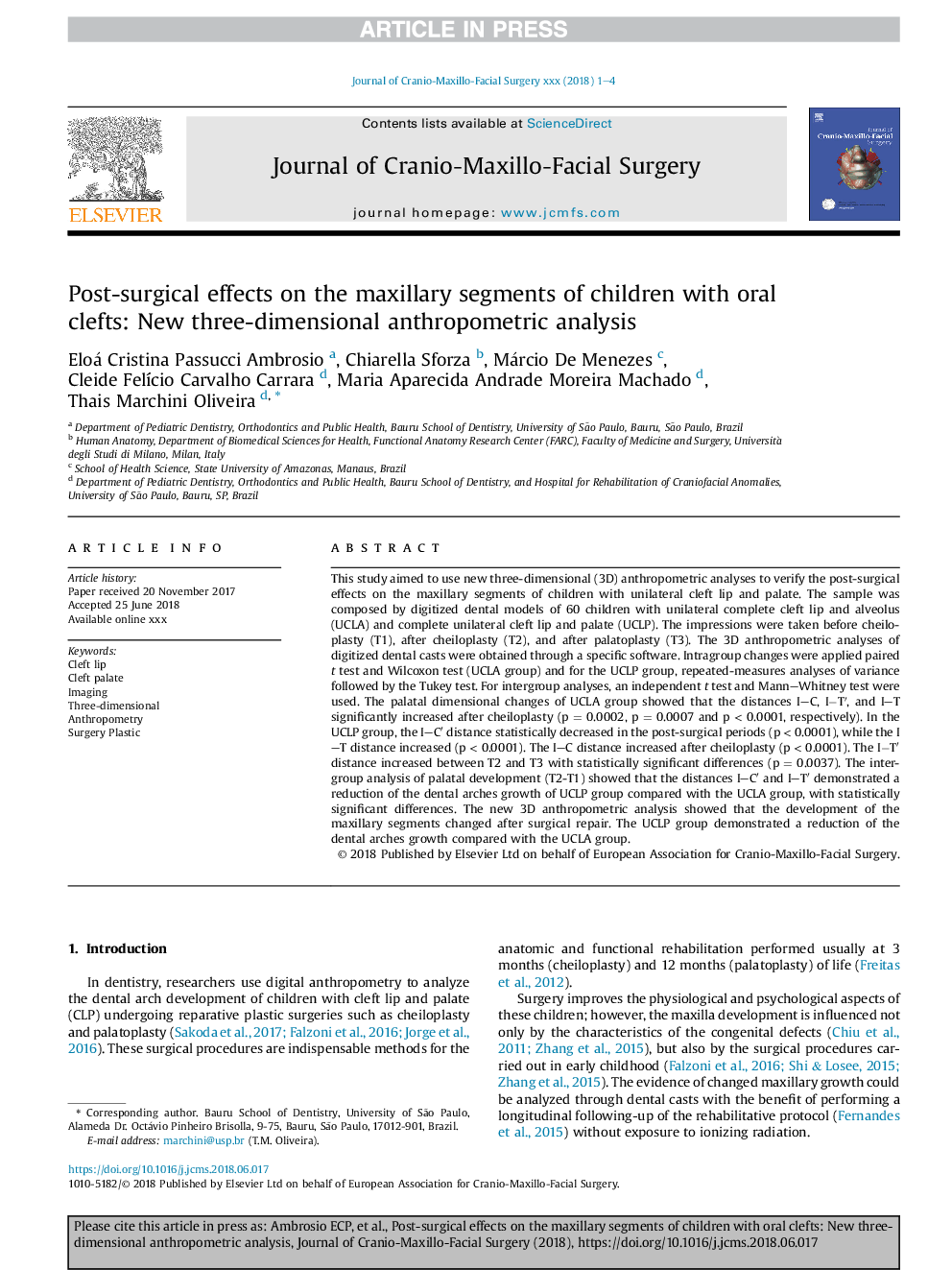| Article ID | Journal | Published Year | Pages | File Type |
|---|---|---|---|---|
| 8963585 | Journal of Cranio-Maxillofacial Surgery | 2018 | 4 Pages |
Abstract
This study aimed to use new three-dimensional (3D) anthropometric analyses to verify the post-surgical effects on the maxillary segments of children with unilateral cleft lip and palate. The sample was composed by digitized dental models of 60 children with unilateral complete cleft lip and alveolus (UCLA) and complete unilateral cleft lip and palate (UCLP). The impressions were taken before cheiloplasty (T1), after cheiloplasty (T2), and after palatoplasty (T3). The 3D anthropometric analyses of digitized dental casts were obtained through a specific software. Intragroup changes were applied paired t test and Wilcoxon test (UCLA group) and for the UCLP group, repeated-measures analyses of variance followed by the Tukey test. For intergroup analyses, an independent t test and Mann-Whitney test were used. The palatal dimensional changes of UCLA group showed that the distances IC, IâTâ², and I-T significantly increased after cheiloplasty (p = 0.0002, p = 0.0007 and p < 0.0001, respectively). In the UCLP group, the ICâ² distance statistically decreased in the post-surgical periods (p < 0.0001), while the I-T distance increased (p < 0.0001). The IC distance increased after cheiloplasty (p < 0.0001). The IâTâ² distance increased between T2 and T3 with statistically significant differences (p = 0.0037). The intergroup analysis of palatal development (T2-T1) showed that the distances ICâ² and I-Tâ² demonstrated a reduction of the dental arches growth of UCLP group compared with the UCLA group, with statistically significant differences. The new 3D anthropometric analysis showed that the development of the maxillary segments changed after surgical repair. The UCLP group demonstrated a reduction of the dental arches growth compared with the UCLA group.
Related Topics
Health Sciences
Medicine and Dentistry
Dentistry, Oral Surgery and Medicine
Authors
Eloá Cristina Passucci Ambrosio, Chiarella Sforza, Márcio De Menezes, Cleide FelÃcio Carvalho Carrara, Maria Aparecida Andrade Moreira Machado, Thais Marchini Oliveira,
